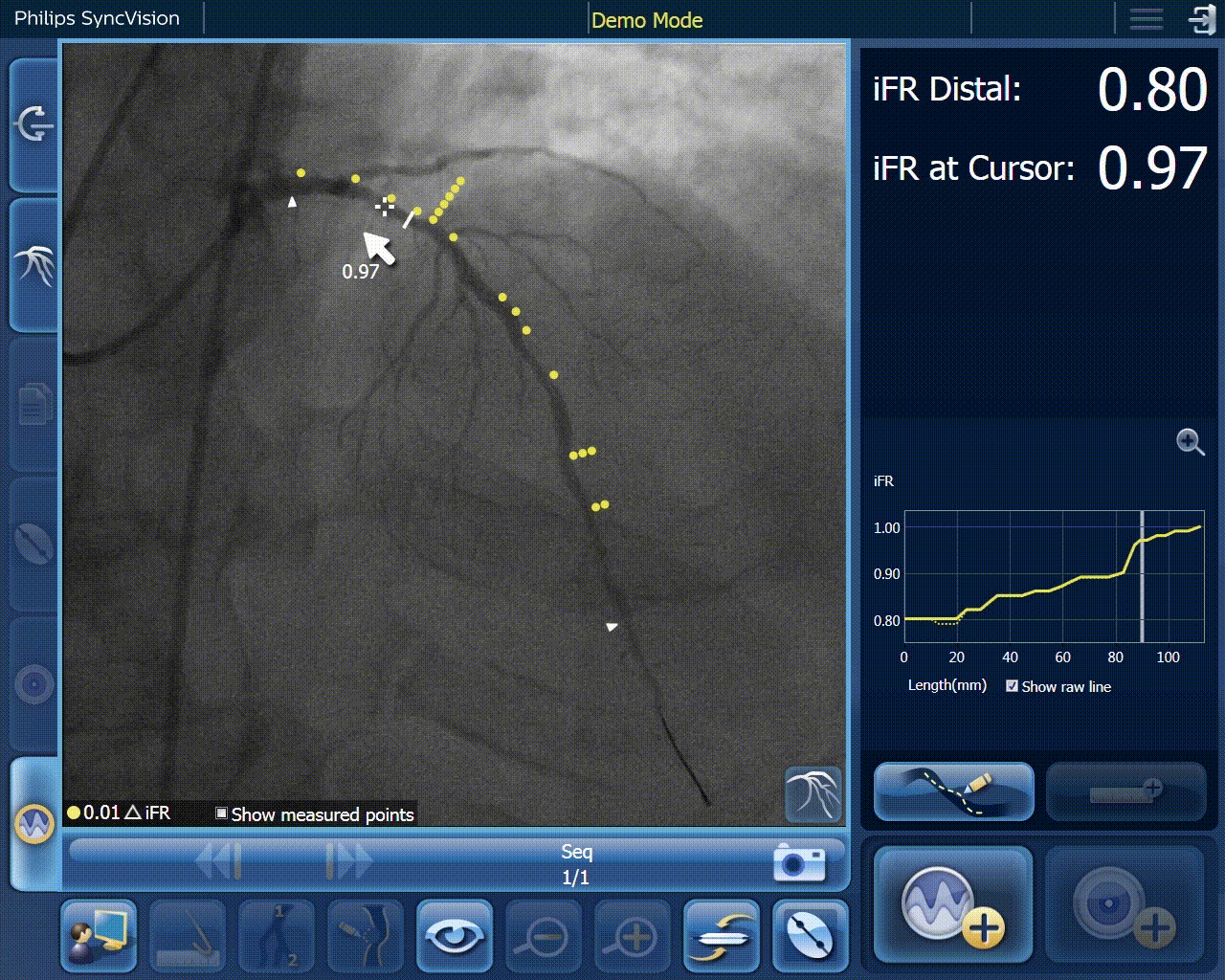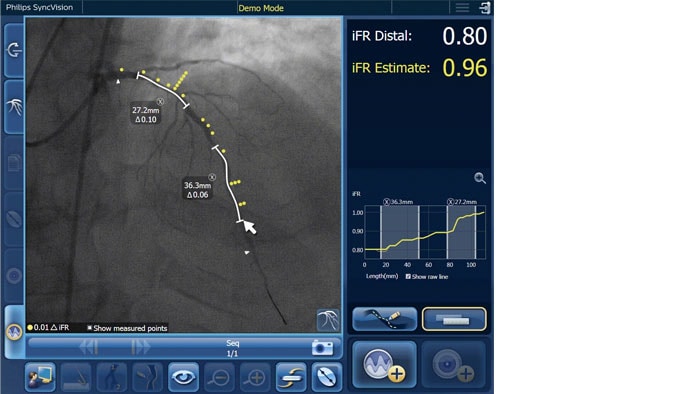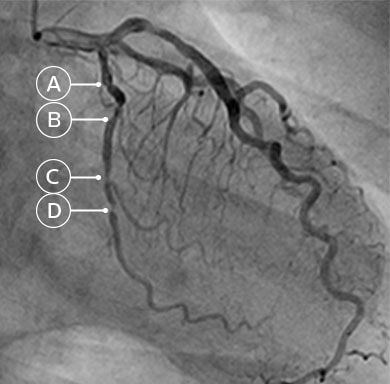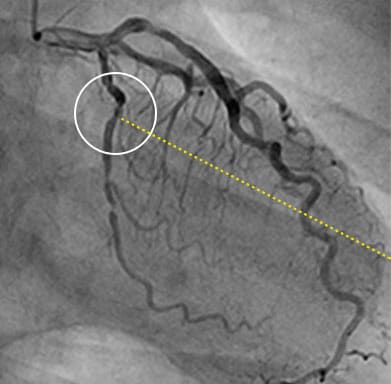iFR is the leading hyperemia-free physiologic index for measuring pressure in diagnostic and interventional procedures. Only offered by Philips,
iFR is recognized in key industry guidelines
Only iFR has clinically validated patient outcome data in the largest physiology studies ever
Proven outcomes
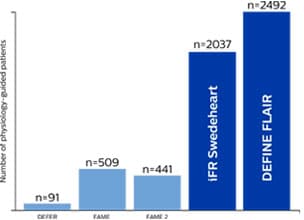
Superior value


Proven outcomes

Superior value
DEFINE PCI
Unseen focal lesions cause residual ischemia10

LAD deferral is safer with iFR9
DEFINE PCI
Unseen focal lesions cause residual ischemia10

LAD deferral is safer with iFR9

Listen to podcast
How can physiology guidance help treat patients right first time?
Listen to Prof. Nick Curzen as he discusses with Dr. Rasha Al-Lamee about the role of physiologyin guiding Complex PCI. Key discussion points include: - How to treat complex patients and achieve successful revascularization - Avoid leaving residual ischemia and improve long-term outcomes; - Discuss recent trials: DEFINE PCI one-year data, and new coming studies such as DEFINE GPS.
Introducing IntraSight
Smart. Simple. Seamless.
Introducing the all-new Philips IntraSight interventional applications platform where imaging, physiology, co-registration11 and software come together to facilitate optimal patient care. IntraSight offers a comprehensive suite of clinically proven modalities, such as, iFR/FFR, IVUS and co-registration11 to simplify complex interventions, speed routine procedures and provide improved patient care.
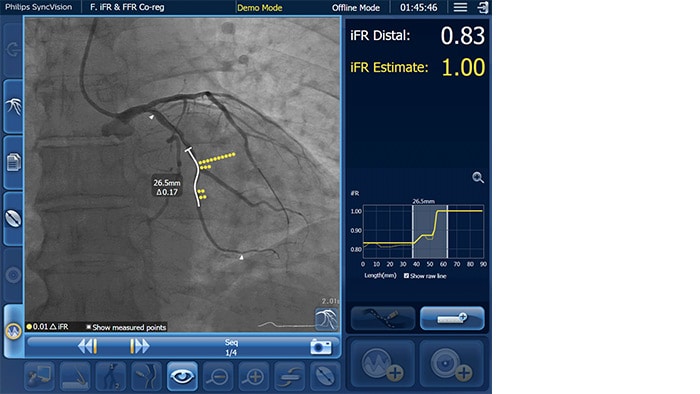
Map iFR values directly onto the angiogram, so you can see precisely which parts of a vessel are causing ischemia
Available on the new Philips IntraSight interventional applications platform and as an upgrade to the Core systems.
Why should you use iFR Co-registration?
Improving PCI with
iFR Co-registration
Dr. Justin Davies explains how iFR Co-registration can identify disease location and the likely impact of PCI before you stent.
Transforming how we do PCI with
iFR Co-registration
Dr. Allen Jeremias explains the need to understand not just whether there is ischemia, but where it is when planning for PCI.
DEFINE PCI results
1 in 4 patients leave the cath lab with post-PCI residual ischemia, mostly due to unseen focal lesions.10

Experts discuss DEFINE PCI key findings
Watch Drs. Allen Jeremias, Gregg Stone, Habib Samady and Manesh Patel as they discuss the results of DEFINE PCI.

Why should you use iFR Co-registration?
Improving PCI with iFR Co-registration
Dr. Justin Davies explains how iFR Co-registration can identify disease location and the likely impact of PCI before you stent.
Transforming how we do PCI with iFR Co-registration
Dr. Allen Jeremias explains the need to understand not just whether there is ischemia, but where it is when planning for PCI

DEFINE PCI results
1 in 4 patients leave the cath lab with post-PCI residual ischemia, mostly due to unseen focal lesions.10

Experts discuss DEFINE PCI key findings
Watch Drs. Allen Jeremias, Gregg Stone, Habib Samady and Manesh Patel as they discuss the results of DEFINE PCI.
Educational opportunities




Philips ELIITE Academy is focused on delivering high value and real-time strategic educational programs that meet the evolving needs of our customers. For more information on the available courses, please download our Medical Education brochure.
You can also visit www.igtdacademy.philips.com.
1. Davies JE, et al., DEFINE-FLAIR: A Multi- Centre, Prospective, International, Randomized, Blinded Comparison of Clinical Outcomes and Cost Efficiencies of iFR and FFR Decision-Making for Physiological Guided Coronary Revascularization. New England Journal of Medicine, epub March 18, 2017. 2. Gotberg M, et al., Instantaneous Wave-Free Ratio Versus Fractional Flow Reserve Guided Intervention (IFR-SWEDEHEART): A Multicenter, Prospective, Registry-Based Randomized Clinical Trial. New England Journal of Medicine, epub March 18, 2017. 3. Patel M. “Cost-effectiveness of instantaneous wave-Free Ratio (iFR) compared with Fractional Flow Reserve (FFR) to guide coronary revascularization decision-making.” Late-breaking Clinical Trial presentation at ACC on March 10, 2018. 4. Patel M, et al., ACC/AATS/AHA/ASE/ASNC/SCAI/SCCT/STS 2017 Appropriate Use Criteria for Coronary Revascularization in Patients with Stable Ischemic Heart Disease. J Am Coll Cardiol. 2017 May 2;69(17):2212-2241. 5. ACC CathPCI Hospital Registry. 6. Lofti A, et al. Focused update of expert consensus statement: Use of invasive assessments of coronary physiology and structure: A position statement of the society of cardiac angiography and interventions. Catheter Cardiovasc Interv. 2018;1–12. 7. 2018 ESC/EACTS Guidelines on myocardial revascularization: The task force on myocardial revascularization of the European society of cardiology (ESC) and European association for cardio-thoracic surgery (EACTS). Eur Heart J. 2018;00:1-96. 8. An iFR cut-point of 0.89 matches best with an FFR ischemic cut-point of 0.80 with a specificity of 87.8% and sensitivity of 73.0%. (From ADVISE II, and iFR Operator’s Manual 505-0101.23. 9. Sen S, Ahmad Y, et al. Major Adverse Cardiac Events when an LAD lesion is deferred after physiological assessment by FFR or iFR: A sub-study of DEFINE FLAIR. J Am Coll Cardiol 2019. 10. Jeremias A et al. The DEFINE PCI Trial: Blinded Physiological Assessment of Residual Ischemia after Successful Angiographic Percutaneous Coronary Intervention, presented at ACC 2019.
11. Co-registration tools available within IntraSight 7 configuration via SyncVision
